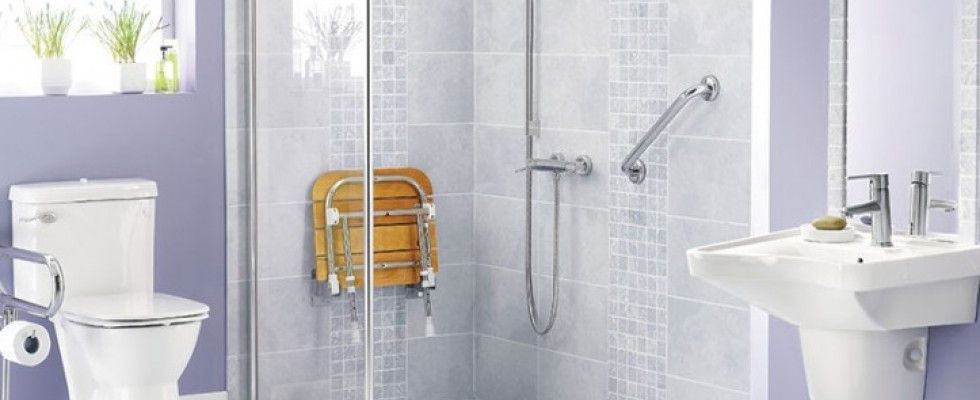
The home modification/aging in place industry is definitely a niche industry looking for its identity and recognition from the American public.
In most cases, a consumer looks to invest in these products and modifications after a mobility altering health event occurs. In turn, purchases are hastily made in crisis mode and many times are inappropriate and shortsighted. We are entering a time where we, as an industry, can start to change this commonplace practice to something much more rewarding. In mid-April, HR 1780, the Senior Accessible Housing Act, was introduced in the House of Representatives. The bill would amend the tax code to allow people over the age of 60 to use up to $30,000 of their funds to modify their home to enhance their ability to remain living safely and independently. As of this writing, there are 12 bipartisan co-sponsors.
The biggest obstacle to significant growth at this time is the lack of revenue. The market for third-party paid home modifications is there, and is solid, but limited to state waiver programs, workers’ compensation claims and Veterans Administration orders. What is lacking is the retail market, and that’s where the big growth potential exists. If passed, HR 1780 would allow the industry to market itself so people can plan for a safe, happy post-retirement life where they want to be—in their home.
Why HR 1780 Works
With our country’s longevity revolution, we have a social dilemma coming our way beginning in four to 10 years. When the baby boomers turn 75, we will begin the cycle where we will have more people over the age of 75 than we have seen in recorded history.
By 2030, there will be more than two times as many people over the age of 80 (16.2 million) than we have now. As their mobility and independence diminish and they live longer, we will have a high demand for safe housing.
I recently read a study that concluded that for every safe senior housing complex built, there will be at least 100 homes that will need safety modifications to appropriately meet the demand.
Other studies show that falls rank third behind drug overdoses and cancer as leading causes of death, and the cost of treating falls is a huge drain on our health care dollars. By promoting safety upgrades to homes, the U.S. government could save big health care dollars by getting folks to modify their homes before they break their hip. This will have the same effect that the tax credit did for the solar industry.
Passage of HR 1780 bill will also create a need for the home modification/aging in place industry to professionalize itself—solidifying it as trusted and educated to provide the right solutions to address consumers' needs. Without quality standards and certified and licensed professionals providing these upgrades, what are the chances of this bill passing?
At the moment, there is a serious disconnect between the clinical setting and the safe transition home. Upon discharge from many health care facilities there may be some discussion on possible safety hazards in a patient’s home, but rarely is there follow-up to see that the needed remedies are put into place. With increased demand for our services, I can see a professional aging in place company being a key player in the success of health care outcomes. The industry not only needs to educate the public about available services, but create connections with rehab clinical settings. When the medical community realizes the positive outcomes we can bring their patients, they will push harder to connect them to us.
Stakeholders will meet soon to develop a strategy that will help move HR 1780 forward. Here are some points on the push for this initiative, strictly from my personal point of view.
Cost Savings
Congress is often met with spending proposals where they are asked to pay for the majority or all of the associated costs. This is truly a middle class bill, so citizens will be paying the bulk of the initiative, and the government will save money on ancillary health care associated with fewer traumatic falls among seniors.
By issuing the tax credit, consumers will get a discount on home modifications and a blessing from the government saying this is a wise investment. Also, as we see more modern, clean designs in this space, and as demand for this style of home increases, home values should remain stable and possibly increase. Aging in place upgrades can be made throughout the home without a hospital look and feel.
Certified aging in place companies will increase revenue and put more people to work in this field, increasing payroll taxes back to the government.
Cost Efficiency
Having the public build the inventory of safe living places means that we help solve the looming problem of accessible housing for the mobility impaired. People will otherwise be seeking much more expensive alternatives such as assisted living and nursing homes.
Happy Consumers
It’s no secret that, given the choice, folks want to remain in their own home as long as they possibly can. Home is where you find family support, grandkids, pets, friends and happiness.
We have no idea whether a great opportunity such as this bill will ever gain traction with our elected officials, but we plan on jumping in to see the process through. We will keep you updated. We invite you to join us and enjoy the ride.
